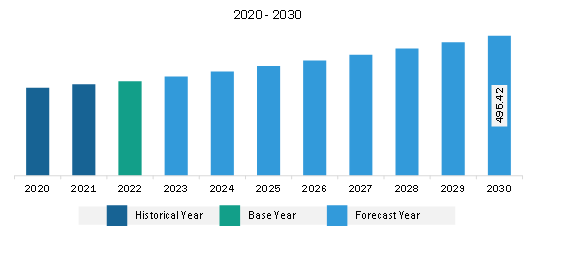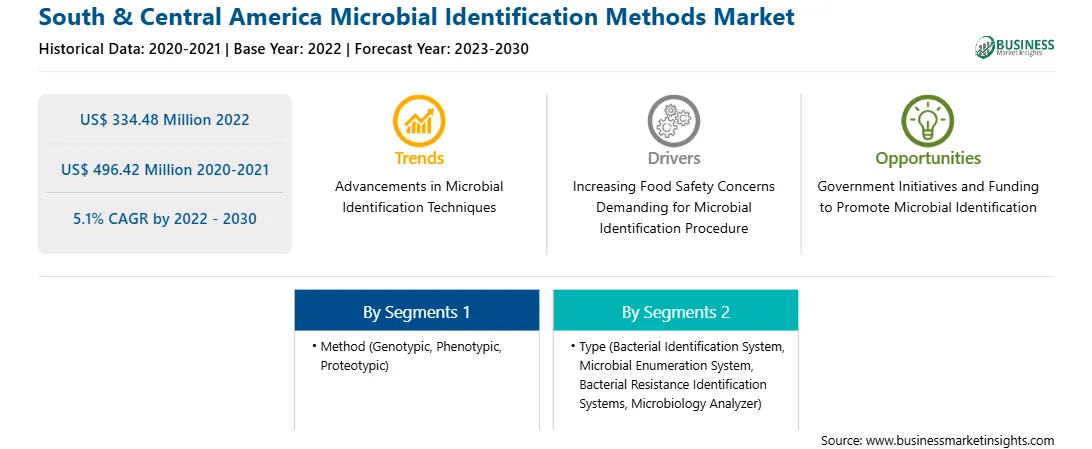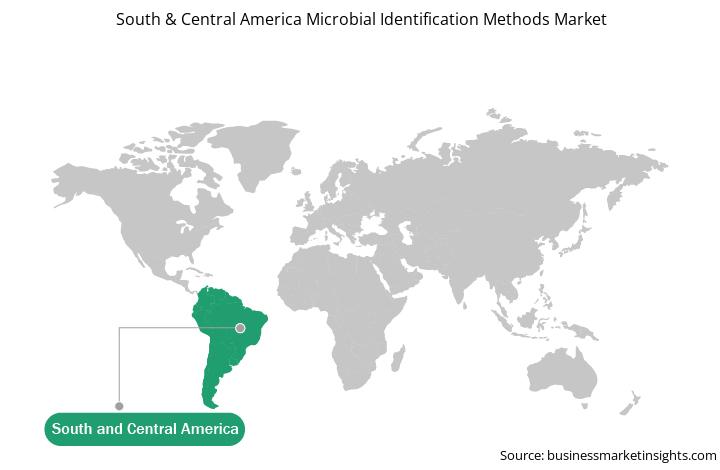Foodborne diseases (FBD) are a prevalent and expanding public health and economic problem. The prevalence of foodborne infections is influenced by recent changes in food production and processing methods and consumers' ever-evolving eating patterns. The interaction between known pathogens during infection is one of the concerns, and new difficulties have emerged in recent years. Despite the rising adoption of chemical preservatives, cold chains, and a greater understanding of microbes, foodborne illnesses are a significant public health issue for both industrialized and developing nations. The Food Security Cluster estimates that each year, ~420,000 people die, and over 600 million people—nearly one in ten people worldwide—get sick after consuming contaminated food, resulting in a loss of 33 million DALYs in June 2022. FBD outbreaks resulted in 60,907 cases of food poisoning and 71 fatalities throughout Brazil between 2015 and 2021. The largest number of foodborne illness deaths happened in the north of the nation, despite the southeast having the highest number of foodborne outbreak cases. Further, in January 2024, more than 60 people were infected by a Salmonella outbreak, according to health officials in Chile. The outbreak in the Metropolitan Region that was caused by eating goat's cheese has so far impacted 66 persons. In total, the Valparaíso Region has recorded 28 instances, while the Metropolitan Region has reported 38 cases, including seven hospitalizations. The conventional approach is cultivating bacteria using a variety of nonselective and selective enrichment techniques, followed, among other things, by biochemical confirmation. The time-to-detection is a significant limitation when testing foods, especially those with short shelf lives like fresh meat, fish, dairy products, and vegetables. Several newer detection methods use spectroscopic approaches, such as matrix-assisted laser desorption ionization-time of flight and hyperspectral imaging protocols. Thus, the increase in cases of foodborne diseases is driving the microbial identification methods market.
Latin America comprises countries such as Brazil, Mexico, and the rest of Latin America. In Latin America, a high prevalence of infectious disease is boosting the microbial identification methods in pharmaceuticals, diagnostics, and environmental testing. For instance, Brazil has a high burden of infections and diseases. According to CDC Yellow Book 2024, various fungi (e.g., Paracoccidioides, Coccidioides, and Cryptococcus neoformans) are endemic to Brazil, which causes respiratory illness and severe diseases such as meningitis and bone infections. As per the same source, infectious diseases such as Influenza, Tuberculosis, HIV, Leptospirosis, Chikungunya, Zika, Yellow Fever, and Dengue are prevalent in different parts of Brazil. Thus, the country's high prevalence of infectious diseases is boosting the demand for pharmaceutical production and diagnostics, thereby fueling the market growth. Further, Brazil has a significantly large pharmaceutical industry. The country has made significant developments in the pharmaceutical industry owing to its economic policies and reforms, solid hold in domestic pharmaceutical production, and a surge in healthcare expenditure. As per ITA, Brazil spends 9.1% of its GDP on healthcare. Its domestic production capacity predominantly meets the locally generated pharmaceutical demand, enables trade activities, and contributes notably to the national GDP. According to the US Department of Commerce, ~80% of pharmaceutical companies in Brazil are domestic and largely focus on the production of generic drugs for chronic diseases, rare diseases, and infectious diseases (HIV and Hepatitis C). Thus, Brazil's flourishing pharmaceutical industry is expected to favor applying microbial identification methods during drug production in the coming years. Furthermore, according to “CDC in Mexico,” published in April 2021 by the CDC (US Department of Health & Human Services), infectious diseases such as COVID-19, Zika, tuberculosis (TB), influenza, and measles are prevalent in Mexico. Thus, the prevalence of infectious diseases in the country drives the demand for pharmaceutical production. According to data from the Wisconsin Economic Development Corporation (WEDC) in February 2022, Mexico is among the top 15 largest pharmaceutical markets globally, mainly attributed to a highly improved regulatory environment and high foreign investment. The WEDC further reported that the demand for pharmaceuticals such as antibiotics and anti-inflammatory drugs has increased in recent years due to the rising cases of infectious diseases, including the COVID-19 infection, in Mexico. Thus, the rising demand for pharmaceutical drugs favors the growth of Mexico's microbial identification methods market. Argentina, Peru, Chile, Bolivia, and Ecuador are among the major contributors to the Rest of Latin America microbial identification methods market. A rise in the prevalence of several infectious diseases and an increase in initiatives to prevent and control infectious diseases will likely provide growth opportunities to the market in these countries in the coming years. As a result, pharmaceutical manufacturers focus on developing personalized medicine and therapies to treat such conditions, which involves high-end environmental testing. Countries in Latin America are significantly raising the domestic production of pharmaceutical products. For instance, Cuba has strong domestic pharmaceutical and biotechnology product production capability, complying with good manufacturing practices. Thus, the high infection prevalence and growing pharmaceutical production are contributing to the growth of the Latin America microbial identification methods market in the Rest of Latin America.

Strategic insights for the South & Central America Microbial Identification Methods provides data-driven analysis of the industry landscape, including current trends, key players, and regional nuances. These insights offer actionable recommendations, enabling readers to differentiate themselves from competitors by identifying untapped segments or developing unique value propositions. Leveraging data analytics, these insights help industry players anticipate the market shifts, whether investors, manufacturers, or other stakeholders. A future-oriented perspective is essential, helping stakeholders anticipate market shifts and position themselves for long-term success in this dynamic region. Ultimately, effective strategic insights empower readers to make informed decisions that drive profitability and achieve their business objectives within the market.

| Report Attribute | Details |
|---|---|
| Market size in 2022 | US$ 334.48 Million |
| Market Size by 2030 | US$ 496.42 Million |
| Global CAGR (2022 - 2030) | 5.1% |
| Historical Data | 2020-2021 |
| Forecast period | 2023-2030 |
| Segments Covered |
By Method
|
| Regions and Countries Covered | South and Central America
|
| Market leaders and key company profiles |
The geographic scope of the South & Central America Microbial Identification Methods refers to the specific areas in which a business operates and competes. Understanding local distinctions, such as diverse consumer preferences (e.g., demand for specific plug types or battery backup durations), varying economic conditions, and regulatory environments, is crucial for tailoring strategies to specific markets. Businesses can expand their reach by identifying underserved areas or adapting their offerings to meet local demands. A clear market focus allows for more effective resource allocation, targeted marketing campaigns, and better positioning against local competitors, ultimately driving growth in those targeted areas.

The South & Central America microbial identification methods market is segmented based on method, type, and country.
Based on method, the South & Central America microbial identification methods market is segmented into genotypic, phenotypic, and proteotypic. The phenotypic segment held the largest share in 2022. The genotypic segment is further subsegmented into instruments, kits, reagents. The phenotypic segment is further subsegmented into instruments, kits, reagents. The proteotypic segment is further subsegmented into instruments, kits, reagents.
By type, the South & Central America microbial identification methods market is segmented into bacterial identification system, microbial enumeration system, bacterial resistance identification systems, microbiology analyzer, and others. The bacterial identification system segment held the largest share in 2022.
Based on country, the South & Central America microbial identification methods market is segmented into Brazil, Mexico, and the Rest of LATAM. Brazil dominated the South & Central America microbial identification methods market in 2022.
Accelerate Diagnostics Inc, Avantor Inc, Becton Dickinson and Co, bioMérieux SA, Bruker Corp, Danaher Corp, Merck KGaA, Molzym GmbH & Co KG, Shimadzu Corp, and Thermo Fisher Scientific Inc are some of the leading companies operating in the South & Central America microbial identification methods market.
1. Avantor Inc
2. Becton Dickinson and Co
3. Danaher Corp
4. bioMérieux SA
5. Merck KGaA
6. Thermo Fisher Scientific Inc
7. Bruker Corp
8. Shimadzu Corp
9. Accelerate Diagnostics Inc
10. Molzym GmbH & Co KG
11. Biolog Inc
The South & Central America Microbial Identification Methods Market is valued at US$ 334.48 Million in 2022, it is projected to reach US$ 496.42 Million by 2030.
As per our report South & Central America Microbial Identification Methods Market, the market size is valued at US$ 334.48 Million in 2022, projecting it to reach US$ 496.42 Million by 2030. This translates to a CAGR of approximately 5.1% during the forecast period.
The South & Central America Microbial Identification Methods Market report typically cover these key segments-
The historic period, base year, and forecast period can vary slightly depending on the specific market research report. However, for the South & Central America Microbial Identification Methods Market report:
The South & Central America Microbial Identification Methods Market is populated by several key players, each contributing to its growth and innovation. Some of the major players include:
The South & Central America Microbial Identification Methods Market report is valuable for diverse stakeholders, including:
Essentially, anyone involved in or considering involvement in the South & Central America Microbial Identification Methods Market value chain can benefit from the information contained in a comprehensive market report.